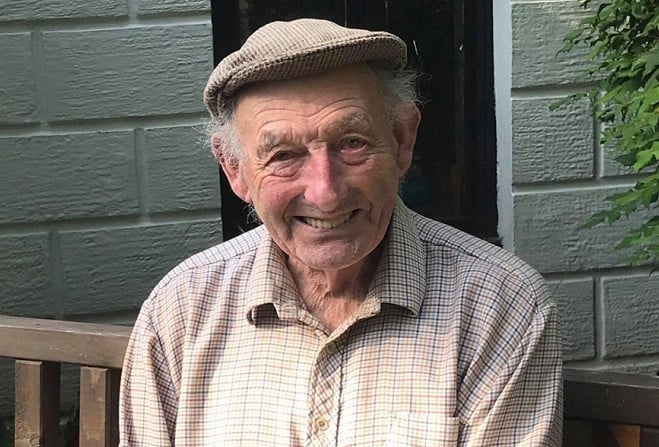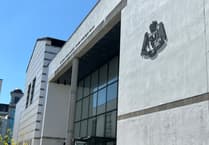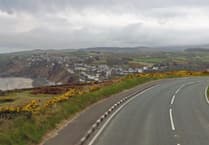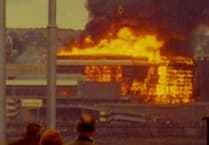The next Manx character I talked to really fits the bill.
This is part one of two and is mainly about his early life and exploits.
I’ve known Bob Kewley for a number of years and we have often had chats about motorcycle racing, the Parish Walk and all things Manx. He is a very interesting storyteller.
He was born in 1936 and raised at Knock Froy in Santon, so he was three years old at the breakout of the Second World War.
Together with sisters, Majorie, Dorothy and Mary, he attended Santon School and walked from home each day.
It was about two miles each way and he told me some girls on another farm had a five-mile each-way walk.
Bob told me in the mid 1940s there was a very heavy snow and the teacher sent the children from outlying farms home.
It snowed so hard that they were snowed in at home for some time, but the farm was self-sufficient with wheat, oats, milk, eggs and potatoes.
At the age of three Bob had started doing daily jobs around the farm, such as feeding the lambs and hens and collecting the hens’ eggs.
He has lots of stories which, when looking back, can be really amusing.
For example, when he was six his father decided to sell a horse at the mart adjacent to the Whitestone in Ballasalla and announced it would be delivered anywhere south.
Imagine a six-year-old riding a horse not only from Knock Froy to Ballasalla but after the sale continuing to the outskirts of Port Erin to deliver to the farmer who bought it.
He tells me the last person who farmed where the delivery was made to was Stan Clucas.
After the safe delivery, six-year-old Bob was given a cup of tea and was put on board the bus for the return journey to Mount Murray.
From Knock Froy to Port Soderick was a footpath named ‘Smuggler’s Walk’.
It is said that illicit goods landed at Port Soderick would follow this route to the Mount Murray, which at that time was the site of a gentleman’s residence.
Bob remembers a time just before Christmas as a young lad busy stripping poultry in a calf house (and I make that point because no seasonal refreshments were involved) when he heard steps coming past and his father who was with him said ‘don’t worry they won’t harm you’ when three people dressed in old-fashioned clothing and one with a bag on his back went past and through Knock Froy yard.
Bob saw these apparitions on three occasions, obviously still carrying on their activities from hundreds of years prior to the sightings.
Horses have always been an important part of Bob’s life.
As a young man he recalls hay being put into ‘rucks’ and with ropes around them and him guiding the horses the hay would be put into large stacks. He reminded me of the famous war slogan ‘Plough for Victory’. At this time most of those of a certain age had left the island to serve.
Bob, being younger, was involved in the work with a horse ‘grubbing’ turnips and with them laid out in ridges he would thin out.
His father came into the field one day as Bob was at his work. The truant catcher turned up.
Father said to the official: ‘If you can do what my young feller is doing, I will send him to school tomorrow.’
Well we know the answer!
After that. if the seven-year-old was off school, instead of being marked absent he was marked as ‘working on the farm’.
Another story was that Roy Gelling’s father had a tractor. As Roy was ploughing the field Bob would sometimes sit on the mudguard, again aged about seven.
Roy let him have a turn driving with the plough in the ground and coming back across the field.
He also remembered a steam-engined threshing mill coming up the hill towards his home, which was very exciting.
It was to work at the farm of Claude Collister who took Bob along to see it.
The next day it was working and Bob was kept off school to help.
His job was to carry the little buckets of water to fill the barrel adjacent to the engine. He was very happy to be able to sit with the men to have his dinner.
All the neighbouring farmers would work together to work the mill. When he was about eight he was shown how to tie the bales and that became his job when the work was taking place.
Bob started at Castle Rushen when he was 12. He reminded me that my Uncle Godfrey was then the headteacher.
The funny story Bob told me was about football. He had turned up with new boots and so on and within a few minutes the referee was blowing his whistle. ‘Offside,’ he was told.
The same thing happened shortly after and Bob explained he didn’t know the rules of football.
He was sent off the pitch and asked the referee where he should go.
He was told: ‘Go where you like just get off my pitch!’
His bus contract to go home wasn’t until after 4pm so he wandered around Castletown.
He arrived at Qualtrough’s timber yard and was given a ration coupon and a few coppers to buy sweets for sweeping up the shavings. By the railway station was a little garage where a man was working on a car and motorcycle. Bob was interested and went back several times.
In the end he got to help out by passing spanners and eventually learned about mechanical matters.
The man was none other than Derek Ennett, a top motorcycle racer at that time who sadly lost his life in the Ulster Grand Prix in 1956.
Bob was interested in motorcycles and he recalled a scramble at Knock Froy where he entered the newcomers’ race. Derek let him use his bike, boots and helmet.
He finished third in the race, which was won by a good friend of his who has recently passed away, Lenny Kerruish.
At 14 Bob left school to work on the farm and he recalls in the winter going to the beach in Douglas with his dad in two tractors to collect wrack off the beach for the land.
He hadn’t been told that he needed a licence to drive the tractor as his dad (and mine) never took a test! He took his test aged 16.
In 1960 he broke his leg scrambling at Glen Auldyn, racing up a very steep hill. The ground was hard after freezing overnight. He fell off at the top and heard his leg crack and was then hit by the machine following.
He was carried down the hill, his leg washed in the river and was taken to Ramsey Cottage Hospital for about a week.
In 1958 he had started solo road racing on a 250cc machine. His dad certainly didn’t approve!
The second part of Bob’s story will be featured in the Examiner on Tuesday, March 21, including racing sidecars, the Parish Walk, family, work activities and more.




.jpeg?width=209&height=140&crop=209:145,smart&quality=75)